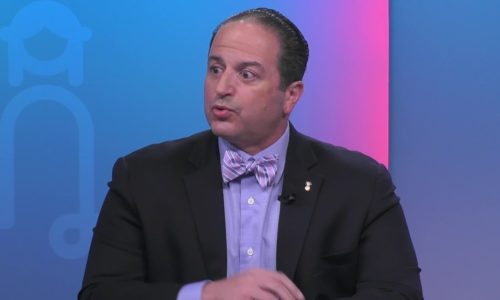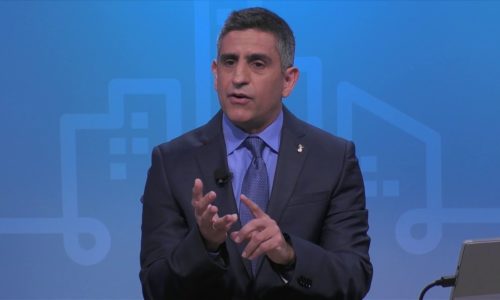Am I getting the right medical treatment? |

The American Board of Internal Medicine is leading a health education campaign to inform patients and physicians about the overutilization of medical resources. This program, known as “Choosing Wisely”, includes recommendations for medical professionals as well as for the public. It was developed “to help providers and patients engage in conversations about the overuse of tests and procedures and support efforts to help patients make smart and effective care choices”.
It has been estimated that up to 30 percent of medical care delivered in this country is unnecessary and in some cases may even cause harm rather than providing benefit. Avoiding unnecessary tests and treatments is not only in the best interest of patients but it provides cost savings to individuals and to society.
The campaign currently includes input from around 70 U.S. medical specialty societies and has partnered with the non-profit consumer organization, Consumer Reports, to help disseminate understandable medical information to the public. Participating medical groups provided a list of five tests, treatments or services that are commonly overused by that specialty, with the intent that the information will be shared with other members of that specialty group as well as with patients and local community groups. The following are just a few of the items submitted to the campaign:
- Removing dental fillings that contain mercury is unnecessary (American College of Medical Toxicology and the American Academy of Clinical Toxicology).
So called “silver” fillings are actually made of a material called amalgam which is an alloy of several metals including silver, mercury, tin and copper. Due to concerns regarding mercury intoxication, many people are opting to replace amalgam fillings with a non-mercury containing alternative. Replacing silver fillings is felt to be unnecessary because the fillings contain very small amounts of mercury and studies have not shown any harm from this source of mercury. Replacing silver fillings can also be expensive and can potentially weaken the tooth requiring additional dental work, such as the placement of a crown. Amalgam fillings should be replaced only when they are worn, broken or when there is decay beneath the filling.
- Imaging tests, such as x-rays, CT scan or MRI, are usually not required in cases of back pain (American Academy of Family Physicians).
Most episodes of back pain resolve within a month whether the person undergoes an imaging test or not. Furthermore, receiving an imaging does nothing to speed healing. X-rays and CT scans expose people to radiation needlessly. Imaging tests are expensive, ranging from around $200 for back x-rays to $1,000-1500 for a CT or MRI scan. There are, however, some clear indications for when an imagining study should be obtained in someone with back pain including unexplained weight loss, fever, loss of bladder or bowel control, and a history of cancer.
- Try non-surgical options before considering surgery with plantar fasciitis (American Orthopaedic Foot and Ankle Society).
Plantar fasciitis is a very common cause for pain in bottom of the heel. The classic symptom is pain upon taking the first few steps after getting out of bed in the morning. The cause is inflammation of a band of tissue called the plantar fascia that runs from the heel to the ball of the foot. Surgery for plantar fasciitis should be viewed as a treatment of “last resort”. Non-surgical measures including stretching exercises, use of arch support or custom foot beds, taking an anti-inflammatory medication (e.g. ibuprofen) or wearing a splint at night to stretch the plantar fascia should be tried before surgery is considered. Surgery for plantar fasciitis can be costly (up to $10,000) and can be associated with a number of complications including nerve damage, permanent “flat feet”, and more pain than was experienced prior to surgery.
- Colonoscopy more often that once every five or ten years is rarely needed (American Gastroenterological Association)
While there are several methods of screening for colon cancer, colonoscopy is considered to be the most accurate test available. When colonoscopy is the chosen method of screening, it is generally recommended to be initially performed at age 50 and repeated at 10 year intervals. Colon cancer usually develops slowly, stemming from a pre-malignant polyp known as an adenoma. If no polyps are seen during colonoscopy, the procedure can safely be repeated in 10 years. When adenomas are seen and removed, a follow-up colonoscopy in 5 years is often recommended. Unless someone is at high risk of developing colon cancer, undergoing the procedure more often than this is unnecessary. Other reasons to restrict the frequency of undergoing colonoscopy include its expense, the risk for complications, and the inconvenience of the procedure.
- Antibiotics are usually not needed in children with respiratory infections (American College of Pediatrics).
Antibiotics are used to treat bacterial infections. They are not effective against viruses, the organism responsible for most colds, sinus infections and respiratory tract infections. Unless someone’s immune system is compromised, the body’s immune system will take care of these infections. Anytime antibiotics are taken there is a risk of an allergic reaction or side effect. Also, overuse of antibiotics promotes the growth of “resistant” bacteria that do not respond to commonly prescribed antibiotics. Situations in which the use of an antibiotic may be considered include: 1) a persistent or worsening infection, 2) a confirmed bacterial infection (whooping cough, strep throat, etc.), and 3) fever (temperature at least 102 degrees) lasting for several days.
The “Choosing Wisely” site is very user-friendly and offers a wealth of information regarding rationale for performing or not performing many medical procedures, tests, and treatments. Rather than making absolute recommendations, however, a primary goal of this campaign is to promote a dialogue between patients and health care providers regarding the judicious use of medical interventions.
If you have any more questions just Ask Hanna, our health advisors are here to help.
Image: ©Shutterstock / New Africa








